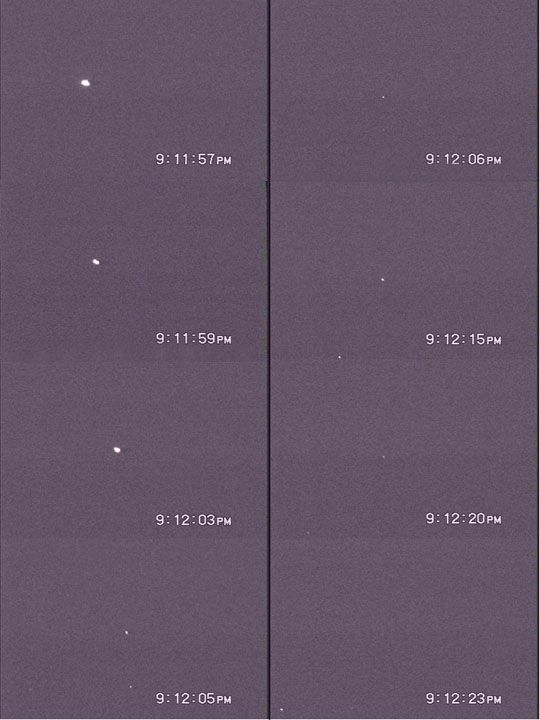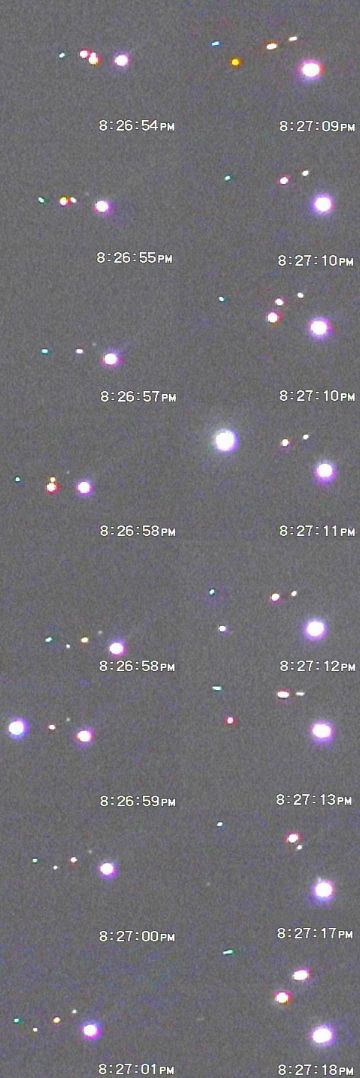
This page was last edited 09/15/2005
 |
This page was last edited 09/15/2005 |
music: Canon
and pictures of what the Manta Ray might look like.
Third AOP as it brightened its lights and then slipped slowly below tree top level.

When individual frames from the video are compared, the pattern of strobes are more numerous than on conventional aircraft, they fired randomly and not according to a preprogrammed electronic sequence, and they consist of colors which are atypical for conventional aircraft (blue lights are not FAA approved, and yellow lights are rare).
Comparison to show relative positions of strobes.

In the comparison graphic below, note how the tail light on the AOP is much further back from the tail of the B767, and how the lights along the midline do not line up with the position of the jet fuselage when the wingtip lights are coincident. Note also that the right or starboard light on the AOP is blue to bluish green, and not a pure green, and how the tail strobe changes color from red to white. Yellow strobes on conventional aircraft are not common, and never occur off to the side of wings and fuselage as they do for AOP No. 3. Strobes are typically not placed along the wings of conventional aircraft - only at the wingtips. The central light that is positioned above the plane of the AOP has no complement on jetliners because the fuselage in front would block it.
And finally, the large central light near front center on the AOP is not paired as it is on a conventional jet. It appears to be off center line (white line, lower right image) for the midline on the jetliner, but on line with the AOP tail light. On a DC-8, for example, forward projecting lights do occur on the underside of the wings out near the wingtips (see animation on page for AOP No. 1), but they are paired, not single as on the AOP. And the tail light of the AOP is not aligned with the tail of the jetliner (on white axis line of jetliner), which is most evident in lower right image when the AOP was overhead. The shape of the AOP does not appear to have been purely symmetrical in shape.
When the positions of all the strobes are mapped according to their relative positions to other strobes (sometimes requiring overlays), it becomes apparent that there were far too many lights on this AOP for it to be even remotely compared to anything that someone can see parked on any public airport tarmac (see comparison below). When the composite strobe map is compared to an eye witness reconstruction of the Manta Ray (below, from Night Siege, 1987), the reason for so many lights becomes quickly apparent: The Manta Ray has a whole panel of lights crowded together on its plow-like leading edge.
Comparison of AOP No. 3 with a Boeing 767 (with all strobes added).

Shape of AOP No. 3 or Manta Ray with placement of lights.
|
|
Send mail to bcornet@monmouth.com
with questions or comments about this web site.
Copyright © 2000 Sirius Onion Works.
This page was last edited 09/15/2005